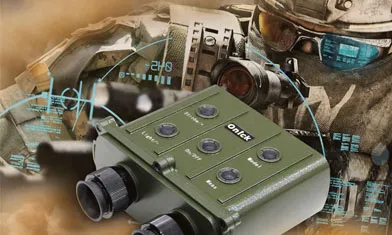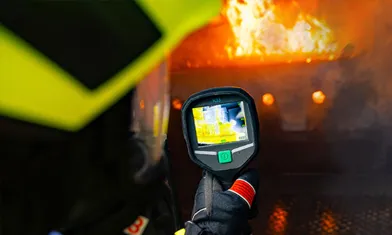Handheld Speed Gun: Speed catcher In Traffic Law Enforcement
In your daily commute, you've probably all experienced this: driving down the road, you suddenly spot a traffic officer pointing a gun-like device at your vehicle. This is a "magic weapon" in traffic enforcement—a handheld speedometer. While seemingly ordinary, it carries the crucial mission of monitoring vehicle speeds and maintaining traffic order. Many are curious about how it accurately captures vehicles and tracks speed, making speeding impossible to hide. Today, we'll unveil its mysteries.
Radar Waves' "Speed Code"
The core principle of a handheld speedometer is based on the transmission and reflection of radar waves. It's like a small box that emits a special "signal messenger." The transmitter inside continuously transmits radar waves of a specific frequency toward the target vehicle. When these radar waves strike the vehicle, they reflect back, like a ball hitting a wall, and are captured by the speedometer's receiver. This back-and-forth process appears simple, but it holds a hidden secret. A speedometer precisely measures the time difference between transmitting a radar wave and receiving the reflected wave. By leveraging the constant speed of light in air (approximately 300,000 kilometers per second), it can calculate the distance between the vehicle and the speedometer. Furthermore, due to the Doppler effect, the frequency of the reflected wave changes when the vehicle and the speedometer are in relative motion. If the vehicle is moving toward the speedometer, the frequency of the reflected wave increases; if the vehicle is moving away, the frequency decreases. By analyzing this frequency shift, known as the Doppler shift, the speedometer can accurately determine the vehicle's speed. For example, when a vehicle is traveling at 30 km/h, the Doppler shift is approximately 500 Hz; at 60 km/h, it is approximately 1000 Hz. These specific data act as a "code" for speed, accurately deciphered by the speedometer.
Radar Wave's "Speed Code"
The core principle of a handheld speedometer is based on the transmission and reflection of radar waves. It's like a small box that emits a special "signal messenger." The transmitter inside continuously transmits radar waves of a specific frequency toward the target vehicle. When these radar waves hit a vehicle, they reflect back, much like a ball hitting a wall, and are captured by the speedometer's receiver. This back-and-forth process may seem simple, but it holds a hidden secret.
The speedometer precisely measures the time difference between the transmitted radar wave and the received reflected wave, leveraging the constant speed of light in air (approximately 300,000 kilometers per second) to calculate the distance between the vehicle and the speedometer. Furthermore, due to the Doppler effect, the frequency of the reflected wave changes when the vehicle and the speedometer are in relative motion. If the vehicle is moving toward the speedometer, the frequency of the reflected wave increases; if the vehicle moves away, the frequency decreases. By analyzing this frequency shift, known as the Doppler shift, the speedometer accurately determines the vehicle's speed. For example, at 30 km/h, the Doppler shift is approximately 500 Hz; at 60 km/h, it's approximately 1000 Hz. These precise data acts as a "code" for the vehicle's speed, precisely deciphered by the speedometer. Precise Positioning: Locking on to the Target Vehicle
In complex traffic environments, with numerous vehicles and interfering factors, how do handheld speed guns accurately lock onto the target vehicle and avoid misjudgments? This is thanks to their precise positioning technology.
Speed guns are typically equipped with narrow-beam antennas. These antennas focus the emitted radar waves in a specific direction and angle, much like the beam from a flashlight. This precisely "illuminates" the target vehicle without interference from surrounding vehicles. Furthermore, the speed gun's internal signal processing system is highly advanced, analyzing and filtering the reflected signals. By analyzing signal strength, frequency variation patterns, and the temporal order of signal occurrence, the speed gun can accurately determine which signal originates from the target vehicle, thereby precisely measuring its speed. Even on multi-lane, heavily trafficked roads, it can accurately identify speeding vehicles like a seasoned hunter, leaving them nowhere to hide.
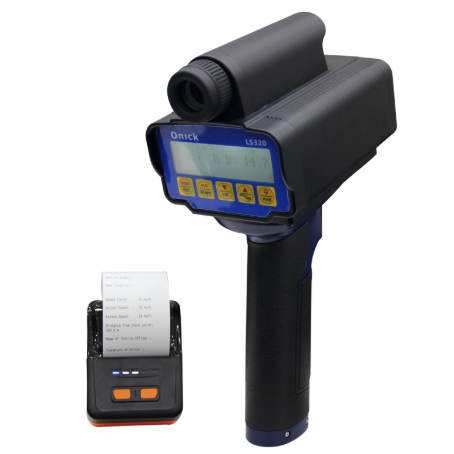
Capture Details: Solid Evidence
If the speed displayed on the screen exceeds the speed limit for that section of road, the speed gun will immediately initiate a capture function. At the moment of capture, the speedometer not only captures a clear image of the vehicle but also records key information such as the vehicle's speed, measurement time, and measurement location. This information is stored electronically in the speedometer's internal memory, forming a complete chain of evidence.
The captured image clearly shows the vehicle's overall appearance, license plate number, body color, and other features. Even at high speeds, the high-definition camera and advanced image capture technology allow for complete detail. Information such as speed, time, and location are uniquely correlated with the image, corroborating each other and ensuring the authenticity and reliability of the evidence. For example, during a law enforcement operation, a car was photographed by a traffic officer using a handheld speedometer while traveling at 80 km/h on a road with a 60 km/h speed limit. The image clearly shows the vehicle's license plate as "XX-XXXXXX" and its body color as white. The screen also displays a speed of 80 km/h, with the measurement time being 10:25 AM and the measurement location being 200 meters east of the intersection of XX Road and XX Road. This detailed information is sufficient evidence to prosecute the vehicle for speeding violations.
In foggy weather, visibility is extremely low, posing a significant safety hazard. Handheld speed cameras are particularly advantageous in these situations. Unaffected by fog, they accurately detect a vehicle's position and speed using radar waves. Traffic police will set up speed cameras at entrances and exits of foggy areas or on key roads, activating the speed camera's warning light to remind passing vehicles to slow down. During these operations, traffic police will strengthen communication with the command center, providing timely feedback on road conditions to ensure stable traffic order in foggy conditions. Even in inclement weather, handheld speed cameras and the dedicated efforts of traffic police ensure road safety.
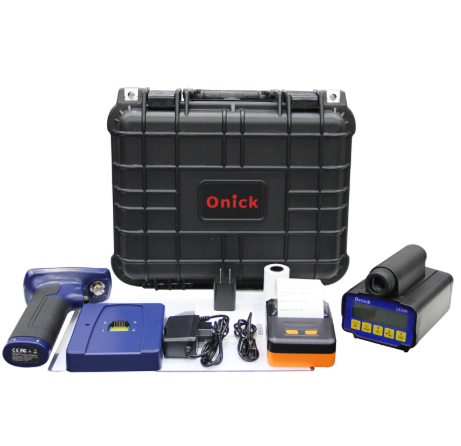
Onick LSP320 Handheld Laser Speedometer
Onick Outdoor Optics integrates advanced laser speed measurement technology and video imaging technology to launch an ultra-portable laser speed measurement and recording system - Onick LSP320 Handheld Laser Speedometer. It is also an integrated handheld laser speed measurement evidence instrument that can accurately measure the real-time speed of the car and the corresponding distance at the same time. It can capture static images of speeding vehicles and record videos. It can fully record the dynamic images of speeding vehicles and is light and easy to carry.
Product features:
4.3-inch color touch screen display, clear and convenient reading
Class 1 eye-safe laser
Speed measurement range 320km/h, speed measurement accuracy 1km/h, distance measurement accuracy 0.15m
With GPS function, voice prompts, humanized design
Support 64GB SD card, record dynamic images for law enforcement and evidence collection
RS232 serial communication port; USB2.0 image data transmission; WIFI: 2.4G&5G
Novel Design, compact style, light to use, high sensitivity, long-term working
Application areas:
Traffic speed measurement, road factory areas, highways, field training, sports competitions, military and police technology, etc.
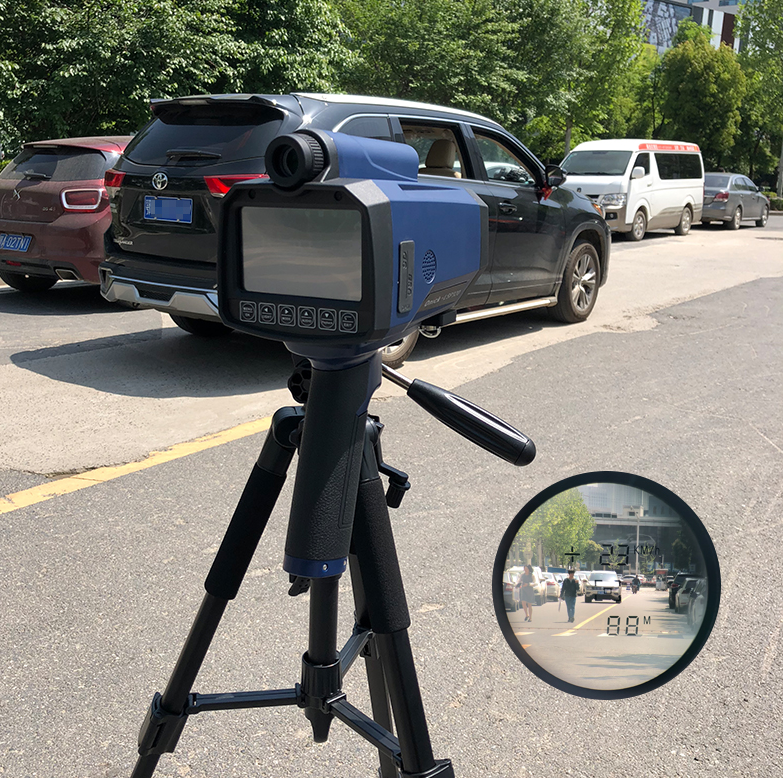
Handheld speed guns play a vital role in traffic enforcement. Like a tireless traffic guardian, they silently safeguard road safety and order. By accurately measuring speed and capturing traffic violations, they effectively curb speeding and reduce the risk of traffic accidents. Statistics show that on roads where handheld speed guns are strictly enforced, speeding violations decrease by 30%-50%, and the traffic accident rate also drops significantly. They not only protect the lives and property of drivers and pedestrians, but also uphold the seriousness and authority of traffic laws, ensuring that every road user can travel in a safe and orderly environment.
Looking ahead, with the rapid development of technology, handheld speed gun technology will continue to innovate. On the one hand, its speed measurement accuracy will be further improved, and the error may be controlled to a smaller range, even approaching zero, which will make traffic enforcement more precise and fair. On the other hand, devices will become even more intelligent, perhaps incorporating AI image recognition technology. This will not only automatically identify license plates but also rapidly analyze and record information such as the vehicle's make, model, and color. Furthermore, deep integration with big data and the Internet of Things will become a trend. Data collected by speed guns can be uploaded to traffic management systems in real time, enabling data sharing and analysis, providing a more comprehensive and accurate basis for traffic planning and decision-making. In the future, handheld speed guns will continue to safeguard our road traffic safety with even more powerful functions and smarter performance, contributing to a smarter and safer travel environment.


